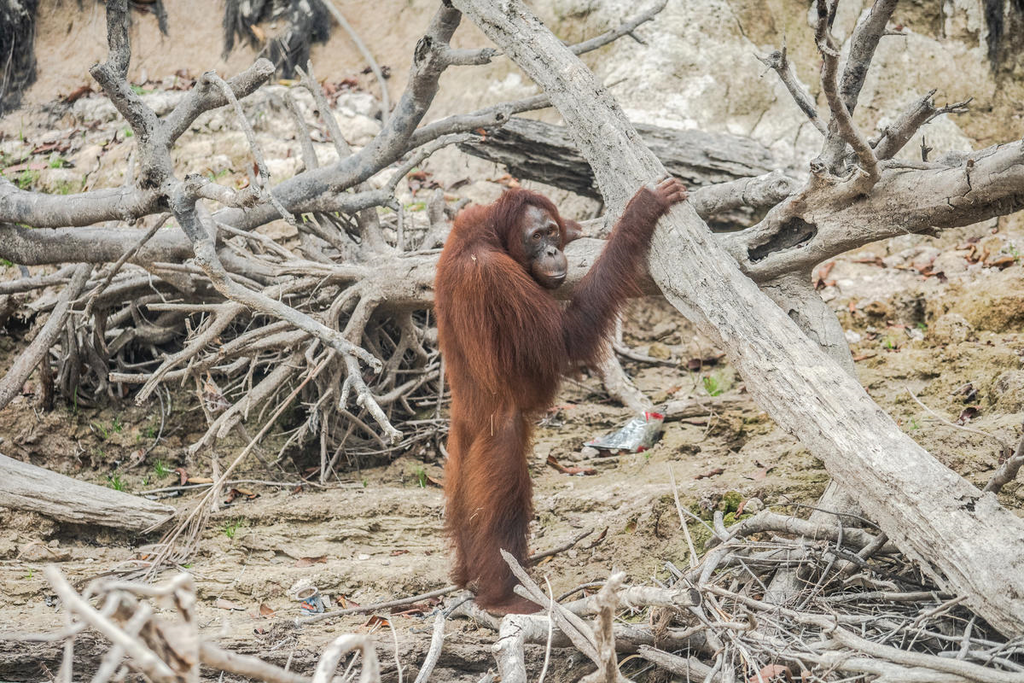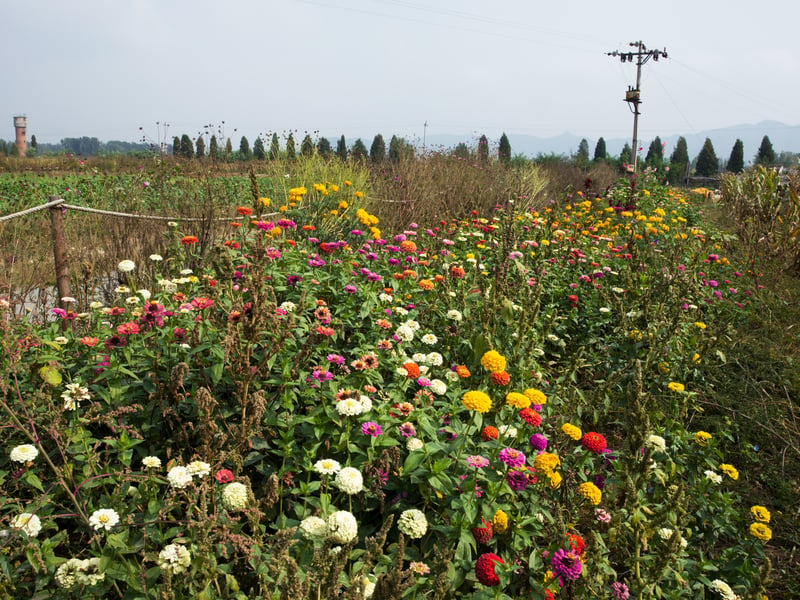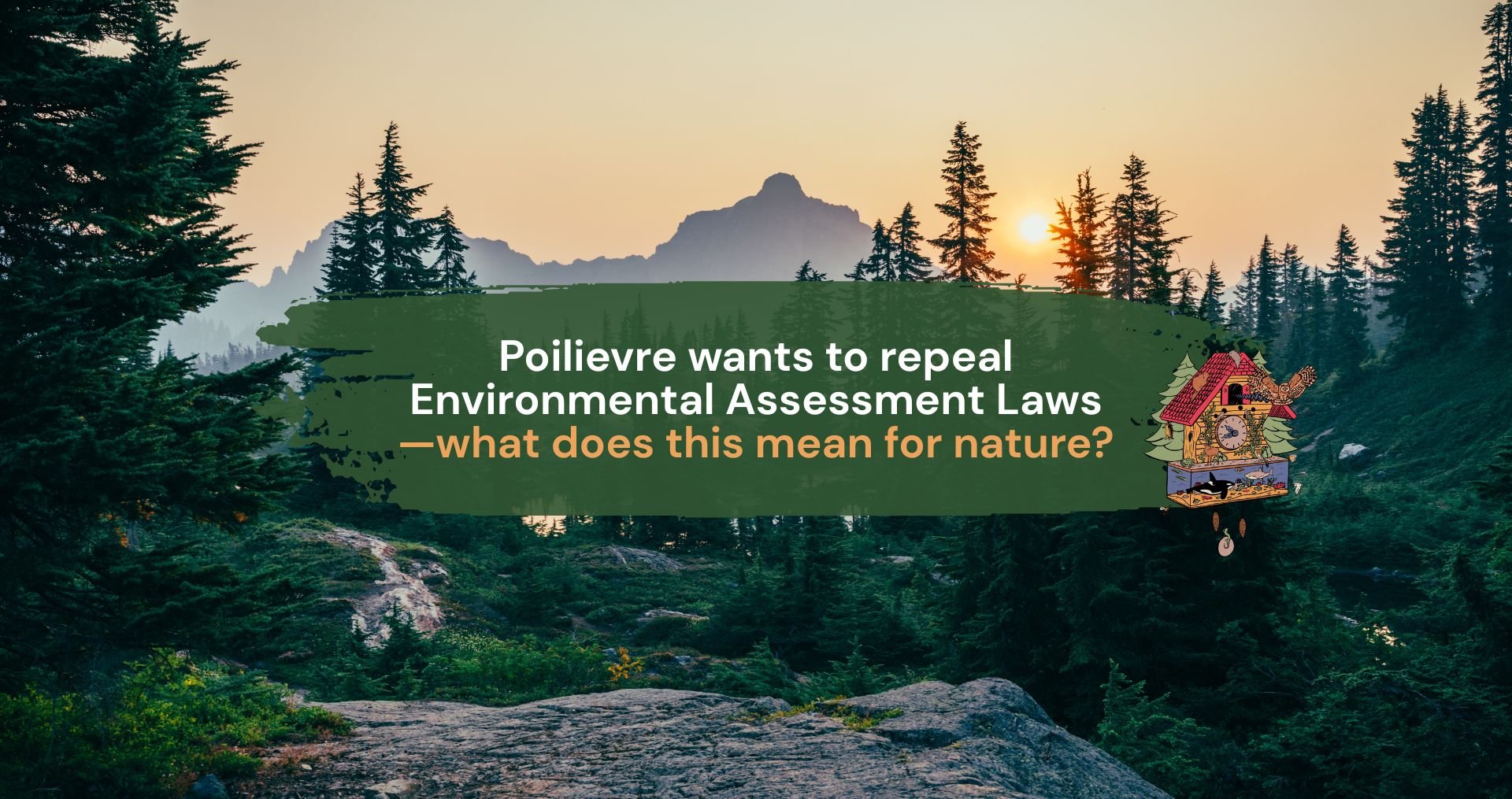Were you expecting 2021 to be any less scandal-filled than 2020? File that notion away under wishful thinking and read on: welcome to #Buttergate.

An orangutan walks in an area covered by haze from forest fires at Salat island, Palangkaraya, Central Kalimantan.
Last week Canadians were utterly amazed to discover what might be going into their butter: Dairy farmers have added Palm Oil supplements to their cattle’s feed. That’s right – we can now add butter to the already long list of everyday products that contain the forest-destroying oil *eye roll emoji*
But at what cost? You probably have a few questions. I know I did. My first was – are Canadian cows really contributing to orangutan extinction?
I first started campaigning with Greenpeace many (not too many!) years ago working to protect Indonesia’s remaining rainforests and honestly I never expected this. The implications of palm oil being used to feed cattle in Canada are utterly huge. Here’s a list of 7 things you really need to know about just how bad this news really is for wildlife, the climate and communities.
1. What is palm oil?
Palm oil is a vegetable oil – like sunflower or olive oil. It’s made from the fruit of oil palm trees – Elaeis guineensis – which come from West Africa but were taken to Southeast Asia in the 1960s. It’s used in many of the things we use or eat every day: shampoo, bread, toothpaste, detergent and even snacks and chocolate bars. And, as we learned recently, to feed industrial livestock in Canada.
Palm oil can be produced sustainably – but a lot of it isn’t. The problem often lies with where and how it is grown. To make way for palm oil plantations, huge areas of rainforest are torn down by bulldozers or burned to the ground. When these forests are destroyed, local people lose their homes and amazing species like orangutans and many different species of birds are pushed to the brink of extinction.
2. Where is it from?
Traceability and transparency within the palm oil sector is a major problem, often making it very hard to know. Oil palms are grown in many tropical countries, although Indonesia is the largest producer in the world, by far, at 58% of global production in 2019 according to Forbes. This means that if our cows are being fed palm oil, then there is a good chance much of it originates in Indonesia. Do livestock producers in Canada know the origins of their palm oil? And do they have guarantees that it’s not sourced from deforestation? The public deserves to know.
3. How does palm oil impact nature, forests and wildlife?
Most Indonesian plantations are on the islands of Sumatra and Borneo, where forest destruction has pushed all three species of orangutans to ‘critically endangered’ status. At least 30 percent of Borneo’s tropical forests have been destroyed over the last 40 years, including its carbon-rich peatlands that can store twice as much carbon as forests. Logging, mining, and plantation development, especially from palm oil plantations have contributed to massive deforestation and impacting the island’s orangutan population. To date, Borneo has lost nearly 150,000 orangutans over the last 16 years.
Commodity production is estimated to have caused 78% of tree cover loss in Southeast Asia in the period from 2001 to 2015. Palm oil and pulpwood (monoculture tree plantations for fibre) are key drivers of this destruction. In Indonesia, the palm oil industry is estimated to have caused 2.3 million hectares of deforestation between 1995 and 2015, with 585,000 hectares cleared between 2010 and 2015 alone. During 2016 and 2017, Indonesia lost 3 million hectares of natural forest.
And in 2018, the International Union for Conservation of Nature (IUCN) concluded that increased production of palm oil was affecting at least 193 species classified as ‘threatened’ on the IUCN Red List. Astonishingly, the IUCN also estimated that “oil palm expansion could affect 54% of all threatened mammals and 64% of all threatened birds globally.”

Smoke rising from peatland at the border of the PT Berkat Nabati Sejahtera (IOI Group) oil palm concession in Ketapang, West Kalimantan.
4. How does palm oil contribute to climate change?
Deforestation is a major contributor to climate change thanks to a double whammy effect. Clearing forests produces greenhouse gas emissions and, with fewer trees, less carbon dioxide is removed from the atmosphere.
Large areas of Indonesia’s forest grow in deep, swampy peat which stores huge quantities of carbon. Oil palm plantations need dry land, so palm oil companies drain the peat, making it very flammable. Fires can rage out of control, releasing yet more carbon dioxide. Indonesia is the third greatest emitter of greenhouse gases in the world, largely because of deforestation.
Greenpeace’s analysis reveals that between 1.1 and 2 million ha of Indonesia’s peatland burned between 2015 and 2018 alone, releasing as much as 1.87 gigatonnes of CO2 – over double Canada’s annual emissions. In the devastating fires that cause havoc in the region in 2019, the fires alone released an estimated 465 megatonnes of CO2 between 1 January to 22 October.
That’s a big carbon bomb.
5. How it harms communities
According to reports, more than 900,000 people in Indonesia have suffered acute respiratory infections due to the smoke haze from the 2019 year’s fires and nearly 10 million children are at risk of lifelong physical and cognitive damages due to air pollution.
Indigenous communities have also been severely affected and displaced. The Dayak people, one of the Borneo’s original inhabitants, heavily rely on the forest for their livelihood. Now, their culture and way of life are threatened because of corporate greed and palm oil.

A student wears a mask as she holds a sign during a protest. She stands in front of a air quality control board that is showing unhealthy levels due to the haze from forest fires in Palangkaraya city, Central Kalimantan.
6. Does it matter that cows are eating it?
Yes!
While the Dairy Farmers lobby group maintains that feeding cows palm oil is safe and have agreed to further study, this all misses the point really. Industrial livestock production is already a huge emitter globally, accounting for an enormous 14.5% of all greenhouse emissions globally. This means that it is roughly the same as all cars, trains, ships and planes in the world combined.
Combine all of this with palm oil to feed cows and we have a climate, wildlife and human health catastrophe on our hands. And we don’t need further studies to know this!
7. What’s the solution?
Changing the food system.
I wish it were more simple than that, folks. But the reality is full of complex and interconnected systems that need to change. And fast.
The unfortunate reality is that palm oil is in a huge number of products we use every single day. That’s not to say that dairy farmers don’t need to stop using palm oil – they absolutely do. But to get rid of dirty palm oil from our daily lives, we need to build up a local food system that is resilient, sustainable and equitable.
That’s why the United Nations Environment Programme recently recommended shifting subsidies away from the sector and towards more sustainable, local and plant-based agriculture.
Greenpeace also wrote to Minister of Agriculture Marie-Claude Bibeau to ask her to shift financial and other government support away from industrial livestock producers to local and organic farmers. Right now there is not enough support for Canadian farmers trying to do the right thing and healthy, organic foods are often too expensive for many of us, which is very unfair.
The bottom line is that we need our government to act if we are serious about eliminating palm oil and rainforest destruction, not just from our cows but from so many of the foods we consume on a daily basis.




Discussion
You make some good points about palm oil. The other side of the equation -- if we stopped using palm oil, what would we use? Palm oil uses a lot less fertilizer, pesticides, water than other crops such as canola (rapeseed) and corn. And maybe the western countries should stop chopping down their forests (Boreal forest in Canada) to make wood for IKEA/Home Depot/Lowes.
Thanks Stephen! Good question and I totally agree we need to be protecting our amazing forests in Canada - currently federal and provincial governments are doing a terrible job at that. Regarding alternatives to palm oil - it depends on what products are involved. In many cases, palm oil just isn't necessary and we can build local food resilience and sustainable food systems that aren't dependent on destructive, globally traded commodities like palm oil. Solving how palm oil is produced - for example by banning deforestation, involving local communities and protecting the rainforest - is also critically important since we certainly don't want to swap out destructive palm oil for destructive canola!! Here's a great example of a local community palm oil initiative which contrasts with the industrial model: https://wayback.archive-it.org/9650/20200401154318/http://p3-raw.greenpeace.org/international/Global/international/code/2012/Forest_Solutions_2/goodoil.html
https://theconversation.com/buttergate-debunked-no-evidence-butter-is-harder-due-to-palm-supplements-for-cows-156091
It is heart breaking to see so many orangutans lose their homes and have no place to go. As well as so much wildlife lost. Once something is extinct we can never bring it back. Awareness to the public and the world about Palm oil and the destruction that comes with it is important. I don't think people are aware that palm oil exist in so many of our foods and products.
This saddens me so much. Governments lie and pretend to care about climate change when they know deforestation is happening and they don't care. Humans are so arrogant to think this land is only theirs. Orangutans deserve to live on the land.